

Agridisk
Egypt - Alexandria
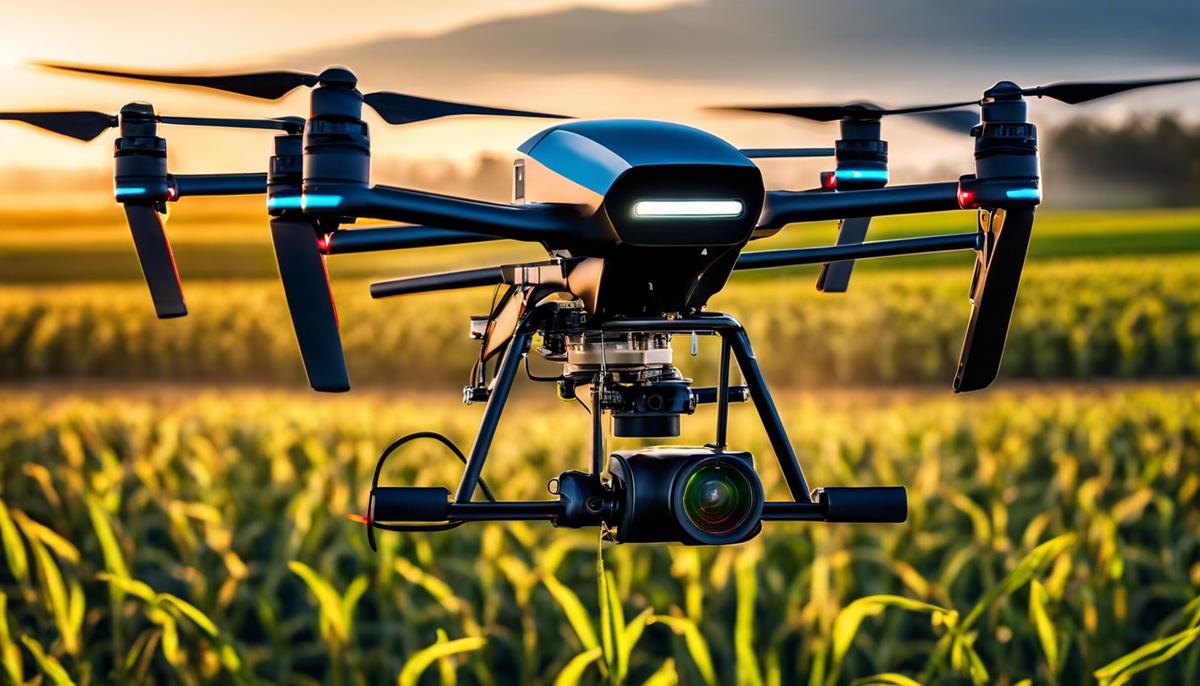
Drone Sprayer | Benefits of Drone Sprayers in Agriculture
Description: The rapid advancement of technology has given birth to innovative solutions that have revolutionized numerous facets of our daily life, with agriculture being no exception. Among these ground-breaking innovations are drone sprayers, intricate devices designed to master the sky and soil simultaneously. This piece provides a detailed analysis of drone sprayers and their myriad applications in agriculture, along with the immense benefits they bring. From an examination of their structural makeup and operational principles to an exploration of their potential challenges and future prospects, this write-up aims to offer valuable insights into this transformative technology. In the fast-paced evolution of technology, drone sprayers stand out as one of the pivotal players in the tech revolution. Imagine the possibility of cultivating massive agricultural fields without manning a huge team or meticulously maneuvering the equipment. Quite a wonderful conception, isn't it? Let's delve deep into this smart tech, known as drone sprayers, dissecting its functionality and analyzing its potential prospects. At their core, drone sprayers are unmanned aerial vehicles (UAVs) equipped with GPS and sprayer systems. They hover around in fields, dispensing fertilizers, pesticides, and other necessary chemicals in a targeted fashion. These drone sprayers, also dubbed as agricultural drones, have found favor with farmers and agriculturists due to their ability to efficiently cover a large area in a short span of time, and have shown potential in revolutionizing the agricultural sector. Now, tackling the question that is begging to be asked - how exactly do they function? The entire operation of drone sprayers starts with mapping the field. The land is mapped in accordance with variables such as the type of crop, health of the crop, soil conditions, and so on. Post this, flight paths are created using GPS coordinates. The next step involves loading the drone with the required chemicals. These chemicals are typically held in a tank and are pumped out through nozzles onto the crop below as the drone follows a predetermined path. The use of GPS allows for precise operation, ensuring that the chemicals are applied where they are needed and in the right quantities. What sets drone sprayers apart is their smart functionality. Equipped with sensors and digital imaging capabilities, drone sprayers capture data showing variations in crop health. Based on this data, the spraying system is adjusted — applying more chemicals where needed, and reducing the amount or entirely skipping sections where they aren't — creating a perfect example of precision farming. This kind of technological application not only completes tasks efficiently but also does so responsibly. By limiting the amount of chemicals used to just the necessary volumes, drone sprayers reduce the environmental impact. Moreover, this precise application cuts down on the cost of materials, making the entire task cost-effective. The incorporation of AI and machine learning pushes the abilities of these drones beyond mere spraying. They open up potential advantages such as predictive analysis for potential crop diseases, efficient water usage, and better crop yield planning. So, when we contemplate the future of agriculture, these drone sprayers are not just another trendy gadget on the tech market. They hold an immense potential in shaping the agricultural landscape, steering it towards becoming more efficient, more predictable, and, indeed, more sustainable. This is one of those rare instances where technology transcends beyond its conventional role of ease and convenience, creating a substantial impact on our lives and the environment. Drone sprayers then are not just tech marvels but also harbingers of the nascent era of smart farming. They reaffirm the profound impact that technology, when harnessed right, can impart - not just in our lives, but also in the world that sustains us. Drone sprayers present an impressive fusion of farming and technology. In a world where innovative tech solutions enhance efficiency every day, agriculture isn't left behind. By further exploring drone sprayers and their integration with Artificial Intelligence (AI) and machine learning, we can identify a number of compelling benefits these devices entail for the agriculture industry. Unlike traditional spraying methods, drone sprayers offer superlative consistency and accuracy. These aerial bots reduce over-spray and under-spray, ensuring each plant gets the right dose of chemicals. This accuracy can stretch up to 98%, quite an edge over human-operated spray methods. Moreover, these high-tech solutions liberate farmers from physically intensive tasks, redirecting resources to other productive needs. Drone sprayers operate smoothly in diverse topographies, which is especially beneficial in hilly and rough terrains. They also perform exceptionally in dense planting schemes, where manual or ground-operated machine spraying may prove problematic. Advanced drone sprayers are equipped with multispectral imaging capabilities, offering unprecedented data and insights into plant health and soil conditions. This information assists in diagnosing problems early on, allowing for prompt and targeted treatment. Another predominant benefit of drone sprayers is speed. Compared to traditional methods, drone-operated spraying leaves behind the lengthy and laborious process, completing tasks in record time. Consequently, farmers can manage larger fields more conveniently, thus increasing productivity significantly. Implementing drone sprayers also means a significant reduction in chemical exposure for farm workers. This not only adds to worker safety but also considerably reduces long-term health risks. It’s also worth noting the environmental prudence of drone sprayers. Widespread surface spraying often contaminates water bodies, endangering marine life. Drone sprayers mitigate this issue, employing precise applications and drastically reducing chemical runoff to the surroundings. AI and machine learning play significant roles in modern drone sprayers. An autonomous drone can optimize spray patterns, adapting to changing conditions in real-time. Moreover, the implementation of machine learning can refine processes over time, analyzing data and recognizing patterns to improve accuracy and efficiency. As for the future, AI integration will facilitate predictive actions, able to forecast pest issues and suggest remedial action – all without human intervention. In conclusion, drone sprayers bring a multitude of compelling benefits to the field of agriculture. Their heightened precision, labor-saving attributes, and environmental consideration make them an extraordinary advancement. Coupled with AI and machine learning, their impact continues to expand scope, promising a dynamic and efficient agricultural future. It's crucial to appreciate the practical frameworks and put in place solutions to address these challenges for smooth transition and effective functionality. For starters, regulations surrounding drone usage are in a state of flux. Many countries have imprecise or stringent rules about drone use, making it tough for potential adopters to navigate the legal landscape. In some jurisdictions, operators may require special permits, while in others, drone use is heavily restricted or entirely prohibited. There are also privacy concerns, as drones often capture photos and videos during operation. Thus, addressing this challenge involves working with lawmakers to come up with sensible, flexible policies that protect both the rights and safety of citizens while allowing for innovative use of drones. There's also the complex matter of drone operational safety. Any machinery malfunction or pilot error can lead to accidents causing property damage, environmental harm, or, worse, injury. This is intensified when you factor in the often harsh and unpredictable conditions found in agricultural environments. Pre-empting safety issues requires robust fail-safe systems, rigorous preflight checks, and adequate operator training. Like with any technology, drone sprayers are prone to cyber attacks. The interfacing systems, GPS technology, and data transmission methods are all potential vulnerabilities. The security of these systems can be fortified through advanced encryption protocols and secure cloud-based solutions, minimizing the chances of unauthorized accesses and leaks. Furthermore, drone sprayers are usually small and struggle with the load capacity given their size, thus affecting the area they can cover in a single operation. It translates to numerous reloads and short operational periods, making them unfavorable for larger farms. Addressing this challenge involves technology advancements aimed at increasing load capacities while retaining the agility and maneuverability of the drones. Battery life is another issue with drone sprayers. On average, a drone can operate 20 to 30 minutes before requiring a recharge. This means frequent breaks in operation which reduces efficiency. The solution could lie in the development of more efficient batteries or perhaps alternate fuel sources that can keep the drone operational for longer periods. Lastly, talking on the skyline of technological advancements, the role of AI and machine learning in addressing the inaccuracies of human control is fundamental. Integrated software solutions that leverage machine learning can significantly improve the accuracy of drone sprayers, making them an even more valuable tool in precision agriculture. Technology, when embraced, is a formidable catalyst for change. The drive to innovate will always face a host of challenges, yet these challenges, when properly managed, create an avenue for upgrades and improvements. Thus, as sophisticated as drone sprayers may be, overcoming their operational challenges is a practical possibility promising incredible things for the future of agriculture. Expanding the Frontier: Drone Sprayers and the Threshold of Tomorrow's Agriculture Peering into the future, drone sprayers hold undeniable transformative potential, surpassing boundaries and carving the path towards more efficient, sustainable, and technology-driven agricultural dynamics. As research and development efforts deepen, the limitations that currently shackle the full potential of drone sprayers – such as load capacity restrictions and battery life constraints – are poised for alleviation thanks to constant technological advancements. Much like improving battery life in smartphones or electric cars, maximizing drone endurance remains a paramount task. Development in ultra-capacitors, solar power, and even wireless charging possibilities indicate the coming of a new era in drone sprayer operational longevity and efficiency. Moreover, current weight limitations emanating from regulatory restrictions and drone design are expected to progressively lessen. Extensive research continues to bolster lighter and stronger materials for drone construction. Moreover, initiatives like Boeing's Cargo Air Vehicle project indicate a trajectory towards larger commercial drones, capable of carrying increased loads, directly impacting agricultural drone sprayers. Addressing the lingering cybersecurity vulnerabilities is also pivotal in perfecting drone sprayers' usability. As with any technology relying on digital interfacing, drone sprayers are susceptible to cyber threats. The industry is working relentlessly on robust prevention mechanisms and security protocols to ensure agricultural data integrity and secure operation. On another note, autonomous decision-making capabilities in drone sprayers foreshadow a transformative leap. AI and machine learning algorithms are growing progressively adept at predictive functions and reaction mechanisms, making the prospects for autonomous decision-making in drone sprayer functions rather intriguing. A future of drone sprayers analyzing real-time conditions, making impromptu adjustments to flight and spray patterns, or even diagnosing plant health independently is increasingly plausible. Indeed, while drones stir up privacy concerns and spark discussions on operational safety, comprehensive regulatory frameworks are materializing. Gradually, regulations are expanding drone usage freedom while ensuring the privacy rights and safety concerns are meticulously considered. This regulatory fine-tuning will aid in fostering broader acceptance and application of drone technology in agriculture. Upcoming technologies such as 5G also promise to revolutionize what is possible with drone sprayers. Coupling with drone technology, 5G offers faster data transmission rates, virtually eliminating latency times. This advancement promises unparalleled efficiency in data capture and real-time decision-making for drone sprayers. In a nutshell, these myriad tech-driven enhancements – the promising remedy to drone sprayers' current limitations and emerging opportunities for optimization – only underscore that we are merely on the brink of what is possible in surging the future of agriculture via drone sprayers. As we segue into this imminent era of propelling productivity, safeguarding the environment, and minimizing human burden, embracing technology to conquer operational challenges is not merely attractive – it is profoundly inevitable. Drone sprayers truly represent a bold leap into the future of agriculture, harnessing the power of technology to make precision farming not just a possibility, but a reality. As we anticipate the further integration of advanced technologies such as AI, these aerial machines offer significant promises of boosting efficiency, productivity, and environmental stewardship within the agricultural sector. Though challenges remain, the potential solutions and continuous evolution of drone sprayers serve as a testament to the unyielding human spirit for innovation and progress. Thus, the trajectory points towards an exciting future - a horizon where drones are no longer mere auxiliary tools, but stalwart allies in the timeless endeavor of agriculture. In the intersection of technology and agriculture, a significant transformation is taking hold - the advent and utilisation of agriculture drone sprayers. These groundbreaking devices, powered by advanced engineering and sophisticated software, are reshaping the landscape of modern farming, introducing efficiency and precision hitherto unimaginable. But as it is often with many technological advancements, such progress carries both environmental and ethical implications. This exploration begins with understanding the inner workings of drone technology, stopping to appreciate every intricate facet. It then progresses to their role in precision farming, their environmental footprint, and the accompanying legal and ethical riddles. Finally, it looks beyond the horizon to envisage the future of these machines in our agricultural practices. Drone technology represents a leap forward in agricultural practice, embodying the next frontier of precision agriculture. A key utility of agricultural drones is spraying, affording novel efficiencies unattainable with traditional agriculture aircraft or ground vehicles. This article delves into the critical technological components that orchestrate the effectiveness of drone spraying in contemporary agriculture. Firstly, the incorporation of Global Positioning Systems (GPS) significantly boosts drone precision. Drones equipped with GPS can accurately navigate pre-set routes and automatically adjust their course based on real-time geographical data, hence improving area coverage and minimizing overlap or missed spots. The second critical component involves spray mechanisms. These systems blend high-efficiency rotary atomizers and electrostatic spraying technologies. The atomizer nozzle produces small, uniform droplet sizes, ensuring the sprayed agent's thorough coverage on plant surfaces. Complementing this, the electrostatic charge causes sprayed particles to adhere to plant surfaces due to the natural electrostatic attraction, reducing drift and improving uptake. Thirdly, autonomous flight capabilities stem from advanced navigation systems, which include Light Detection and Ranging (LiDAR) sensors. LiDAR systems orchestrate the drone's awareness of its surrounding environment, enabling it to detect and avoid obstacles automatically. Beyond safety, these features ensure efficient and consistent spraying, even over uneven terrain or tall crops where manual control could falter. Onboard weather stations and environmental sensors furnish the drone with real-time data, such as wind speed and direction, temperature, and humidity. These data inform precise application rates and times, optimizing pesticide efficacy and minimizing environmental impact. The drone's flight controller, a computerized brain, ties these technologies together. It processes sensor data, controls drone movement and adjustments, and manages spraying activation, ensuring precise control and efficient pesticide application. Drone software, acting as the interface between the operator and the drone, adds an essential layer of precision and ease-of-use. Intuitive planning tools allow operators to plan missions, designate no-spray zones, and monitor real-time flight data on mobile or desktop applications. Post-flight, data gathered by the drone can feed into detailed spraying reports, enhancing record-keeping and further precision in future applications. Lastly, multispectral imaging technologies surge to the fore as instrumental in optimizing drone spraying. Cameras sensitive to visible and non-visible light spectrums, including infrared and ultraviolet, capture plant health indicators and stress markers. Artificial Intelligence (AI) can process these complex data volumes, providing nuanced insights on pest infestation levels or nutrient deficiencies. Such precise information informs selective and targeted spraying, cutting costs, reducing pesticide use, and minimizing environmental impact. In conclusion, drone spraying represents an elegant symphony of various technologies, each playing its crucial part. From GPS for precise navigation to advanced spray mechanisms, autonomous capabilities, real-time sensors, sophisticated software, and powerful imaging technologies. Each of these components, under the orchestration of the drone's flight controller, coalesces to create a tool of unrivaled precision and efficiency in modern agriculture. Significant research continues in this area to push these technologies to new frontiers, driven by the underlying goal of supporting sustainably intensified agriculture. The advancements in battery technology mark an instrumental stride in the agricultural application of drone sprayers. High-capacity lithium polymer (LiPo) batteries enable extended flight times and more operational efficiency. By optimizing energy use, these drones can cover more acreage, thereby expeditiously accomplishing the task of spraying crops. Beyond sheer aerial prowess, drone sprayers can also be equipped with ultrasonic echo sounders. These devices accurately measure the distance from the drone to the crops below, allowing for precise altitude control. Employing this technology can optimize spray reach and ensure every plant receives a uniform application, minimizing wastage and promoting crop health. Advancements in terrain-following radar technology also hold paramount significance. By analyzing the topographic data of the agricultural field, drone sprayers can auto-adjust their altitude following the contours of the terrain. This domain-specific calibration ensures direct and consistent application, irrespective of undulations and land surface irregularities. Digressing from hardware enhancements, the role of software platforms hosting cloud-based farm management systems cannot be undervalued. They facilitate seamless synchronization with ground-based IoT devices, enclosing the feedback loop from data acquisition to actionable farming strategies. These systems streamline managing, tracking, and auditing spray missions, ensuring exacting accountability and precision in large-scale farm operations. Conclusively, given the prodigious rise in the planet's inhabitants coupled with the pressing need to sustain food production, drones are nei merely an appendage of novelty, but quintessential conduits of futuristic farming. Their capabilities—battery technology, ultrasonic echo sounders, terrain-following technology, and cloud-based farm management software—predict a vibrant and more sustainable vision of precision agriculture. These features underscore the exponential potential of drone sprayers in boosting efficiency, effectiveness, and precision in contemporary farming—a stepping stone towards bolstering the overall agro-economic landscape. The advent of drone sprayers in modern agriculture represents a substantial leap forward in precision and efficiency, with integral innovations bolstering this transformative approach to crop management and other agricultural applications. However, the environmental impact of these advanced machinations bears substantial relevance and deserves consideration. Integrating this essential reverence for nature's equilibrium into the discourse surrounding drone sprayers emerges as consequential as the technological advancement itself. One prominent environmental concern stems from the potential unintended dissemination of agrochemicals—herbicides, pesticides, and fungicides—into non-target areas, causing harm to fauna, flora, and water sources—a phenomenon known as spray drift. Despite the advancements in spray mechanism technology, with atomizers and electrostatic spraying allowing for higher efficiencies, the possible drift and deposition of agrochemicals outside of the target area are significant. Mitigating this risk involves implementing advanced meteorological forecasting points, weather-based decision-making systems, and real-time microclimate data analysis. In tandem, the use of intelligent spray systems, which respond to real-time meteorological conditions, can dramatically reduce spray drift. Another concern is the e-waste generated due to the rapid lifecycle and constant upgrading of drone technology. Technology advancements have led to a swift obsolescence of drone models, leaving a trail of electronic waste—batteries, circuit boards, and plastics, among others—in its wake. To address this, there is an urgent call towards developing drone recycling programs and integrating eco-design principles into drone manufacturing to reduce e-waste and promote sustainability. With increasingly complex tools comes added energy requirements, and as such, the energy draw of drone sprayers is a prime focus of concern. There are, however, promising advancements in energy-efficient technologies such as solar, hydrogen fuel cells, and more efficient battery solutions, all of which show potential in mitigating energy concerns related to drone sprayers. Noise pollution is yet another environmental aspect that drones impact. Though generally overlooked for its subtlety, the persistent hum of drone motors may be disruptive to wildlife and people alike. Again, technological advancements pave the way, and drone manufacturers are already exploring quieter flight motor technologies and flight path mapping to avoid disturbing residential areas. As we delve deeper into the digital age and technology continues its fevered advance, staying attuned to the environmental consequence becomes paramount. Drone sprayers, in their insurmountable potential to revolutionize the farming industry, are no different. Both technological innovation and strategic environmental stewardship must rhythmically intertwine to protect our natural environment while bolstering agricultural efficiency and effectiveness. The challenge is indeed intricate, but with continued research, conscientious design, and an unwavering regard for our planet, it indeed is attainable. While drone sprayer technologies are revolutionizing the agricultural landscape and offering unprecedented possibilities in crop management, it's important to scrutinize the legal and ethical implications inherent to their deployment. Such elements prompt a thoughtful examination and potential reformulation of existing regulatory frameworks for their operation and integration into modern farming. A primary legal contention regarding drone sprayers in agriculture pertains to trespassing and privacy rights. The low-altitude operation of these drones raises legitimate concerns of intrusion and potential invasion of privacy. Legal doctrines of aerial trespass are often complex, varying by jurisdiction, necessitating the need for clear legislation guiding the proper use of airspace by agricultural drones. Alongside potential invasion of privacy, a pressing legal concern lies in the sphere of liability. Incidences of collisions, property damage, or injury – whether to humans or wildlife – require a comprehensive legal framework that clearly stipulates areas of responsibility and avenues for recourse. Mechanisms for accident prevention, insurance schemes, and liability law will play vital roles in shaping the future of this technology. Furthermore, intellectual property rights (IPR) constitute fundamental legal elements pertinent to the use of drone sprayers. With AI and cloud-based data management systems integral to this technology, issues of patenting, copyright, and trade secrets demand attention, requiring IPR laws harmoniously tuned with evolving drone sprayer technology advancements. Beyond the legal factors that present themselves, numerous ethical considerations arise. An overriding ethical concern involves the potential impact on job security and displacement of agricultural workers. As these drones automate various aspects of farming, conditions and quality of human labor in the agriculture industry may fundamentally shift, thereby necessitating a robust socio-economic examination. Moreover, the deployment of drone sprayers holds profound implications for environmental ethics. Although these technologies carry prospects for increased efficiency and reduced waste, potential risks to surrounding ecosystems and biodiversity are palpable. Incidences of chemical leakage or accidental discharge could disrupt local habitats, posing an ethical dilemma that hinges on the balance of technological progression and ecological preservation. Attendant to these concerns is the matter of data ethics: data confidentiality, consent for data collection, and data security are pressing issues in an era of digital farming. With extensive data collected and exchanged in drone-enhanced agriculture, a comprehensive ethical framework to manage this big data is fundamental. In sum, the deployment of drone sprayers in agriculture introduces a complex matrix of legal and ethical considerations requiring diligent navigation. By crafting comprehensive regulations and actively engaging with these considerations, agriculture, too, can reap the benefits of technological innovation, without comprising legal and ethical standards. Drone sprayers serve as the nexus between technological advancements and agricultural needs. These innovative apparatuses are changing the landscape, quite literally. Observing the advancements so far, we can begin to anticipate the future progression of agricultural drone sprayers. Current advancements in battery technology are catalyzing a new era for agricultural drone sprayers. Previously, limited flight times and demanding operational necessities were prevalent challenges. However, advanced energy storage technologies, such as Lithium-sulfur (Li-S) batteries and solid-state batteries, are now promising longer flight durations and consequently, more expansive areas covered per single mission. Another valuable addition to this sector could be the inclusion of ultrasonic echo sounders. When integrated within a drone sprayer, these devices provide altitude data to enhance the control of spray dispersal. This improves the effective reach of the sprayers and ensures a more efficient usage of resources without compromising the intended result. Accompanying these altitude control advancements is the potential optimization of drone flights with terrain-following radar technology. This relatively new technology allows the drone sprayer to adjust its altitude automatically based on real-time topographical data. This ensures a uniform application of the spray across varied landscapes, eliminating under- or over-spraying. In addition to these purely technological advancements, the sector of drone agriculture sprayers will also benefit from the synergic interplay of software platforms and cloud technology. Advanced software platforms are poised to offer comprehensive and easily digestible insights, making spray missions more streamlined and resource-efficient. The use and improvement of cloud-based farm management systems promote data acquisition and utilization for real-time decision-making and long-term strategic planning. Furthermore, drone sprayers are poised to play an increasingly significant role in the pursuit of sustainable food production. Through their potential to boost efficiency and effectiveness of spraying operations, these innovative machines could considerably reduce associated environmental impacts and contribute positively to meeting our ever-increasing demand for food production. However, as with any promising solution, several challenges need to be addressed. Potential unintended dissemination of agrochemicals into non-target areas presents a significant concern, necessitating advancements in spray mechanism technologies to mitigate the fallout. The issue of e-waste, driven by drone technology proliferation, illuminates the need for effective recycling programs and eco-design principles in manufacturing. Likewise, the question of energy demands necessitates further advancements in energy-efficient technologies. Unknown aspects of noise pollution might need to be addressed through quieter flight motors and strategic flight path mapping to avoid disturbance to residents and wildlife. Above all, it remains crucial to intertwine environmental stewardship within the DNA of drone sprayer technology. Moreover, drone utilization in agriculture raises questions of trespassing and privacy rights, which warrant legal considerations. Potential accidents and damages resulting from drone operations underline the need for a defined legal framework. Intellectual property right protections would be crucial to safeguard innovation in drone sprayers. Furthermore, fears of job displacement due to automation necessitates ethical considerations around employment and job security. Environmental ethics, especially the potential impact of drone sprayers on ecosystems and biodiversity, require attention. Finally, the management of data, its collection, confidentiality, and security presents another challenge that must be addressed in our pursuit to digitize farming. In conclusion, the future of agriculture drone sprayers is set to be marked by remarkable innovations and challenges alike. To harness the full potential of these machines, it becomes imperative to arrest the challenges as opportunities for further innovation. The academia and industry should thus pledge to work cogently to build a future where drones contribute meaningfully to the beauty of this timeless profession called farming. As we tread into the future, agricultural drone sprayers stand at the forefront of a major agricultural revolution. Given the multitude of benefits they offer in terms of precision and efficiency, their role is only expected to amplify. Yet, as the prominence of this technology grows, it is paramount we remain vigilant of the environmental consequences, legal considerations, and the socio-economic ramifications. As we grapple with these critical questions and simultaneously look for solutions, we must make technology accountable, ethical, and beneficial for every stakeholder involved. Only then can we fully harness the potential of these incredible inventions, sowing the seeds for a prosperous and sustainable future in agriculture.Drone sprayer
Understanding Drone Sprayers
Unfolding the Era of Technology: Drone Sprayers and Their Functioning
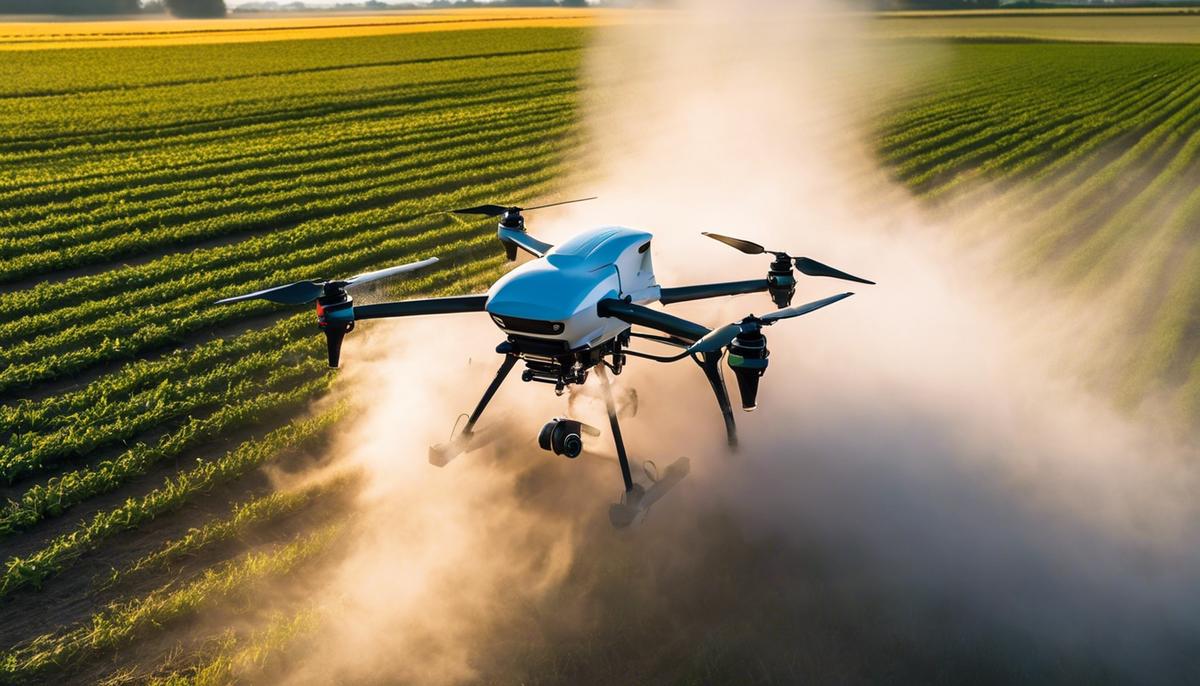
Benefits of Drone Sprayers in Agriculture
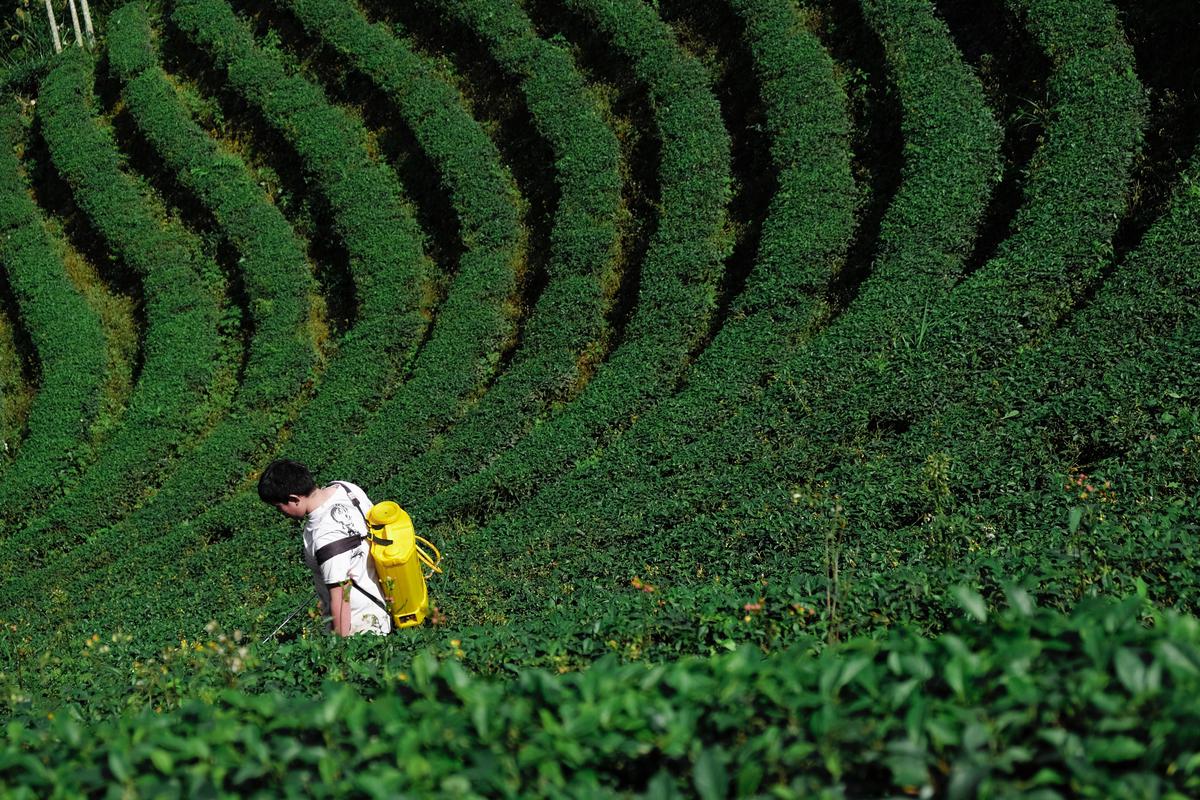
Challenges and Solutions to Drone Sprayers Usage
Taking the step from conventional spraying procedures to fully autonomous drone sprayers is not devoid of challenges.
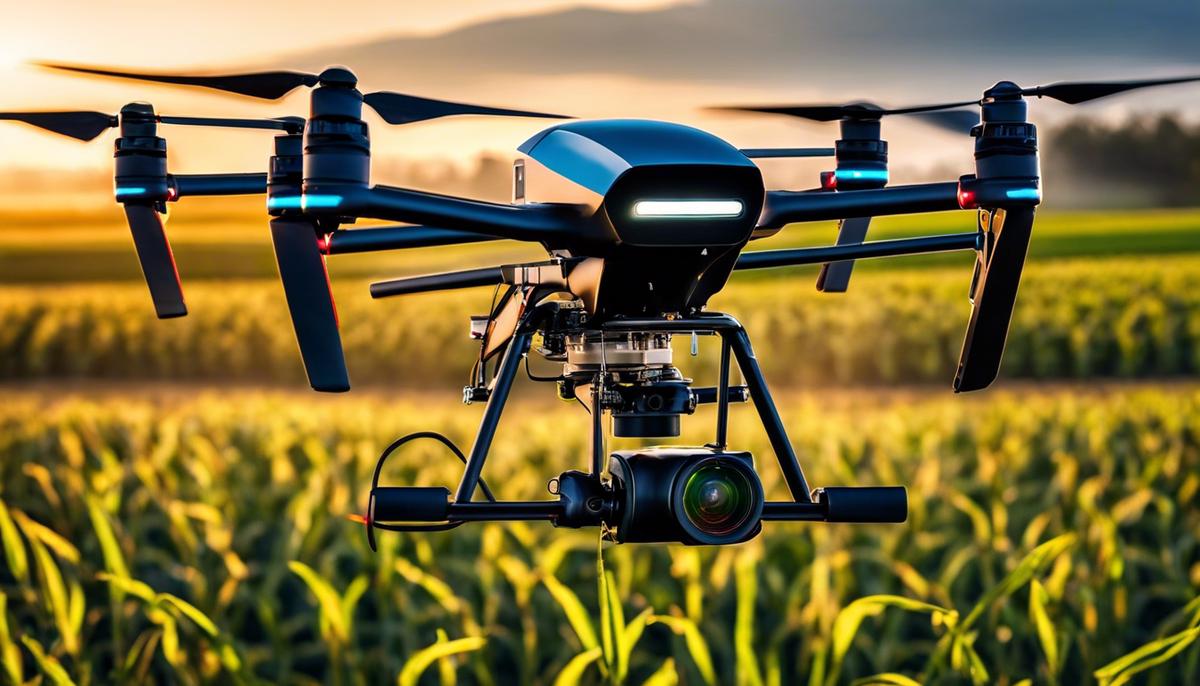
The Future of Drone Sprayers
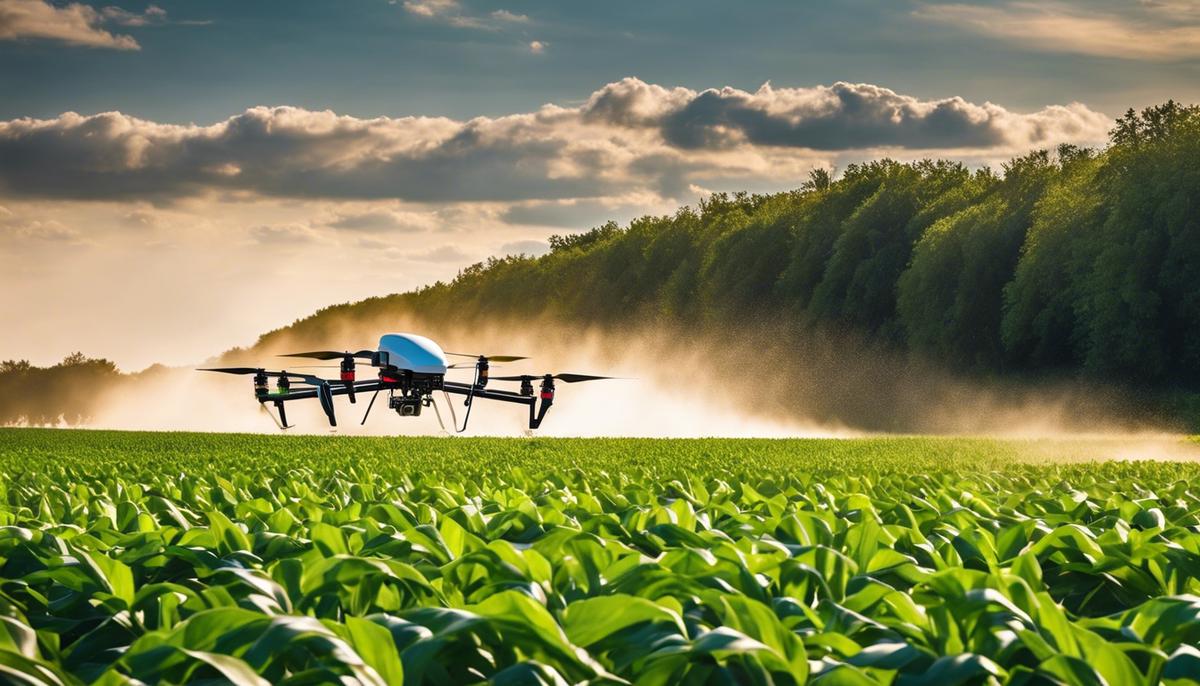
The science behind drone technology
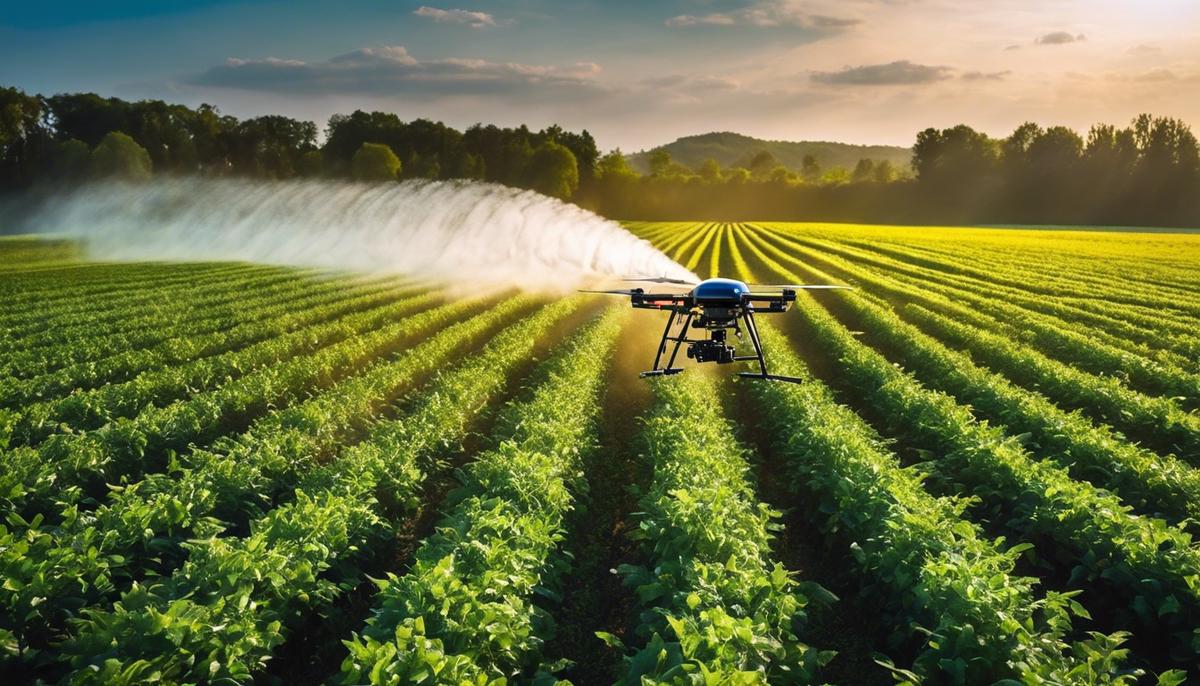
The contribution of Agriculture Drone Sprayers to Precision Farming
Embarking further into the nexus of farming and technology are drone sprayers, which—as an exemplification of human ingenuity—significantly enhance precision and efficiency in agriculture. Building upon the foundational aspects elucidated earlier, such as GPS navigation, high-efficiency atomizers, LiDAR sensors, onboard environmental sensors, the central flight controller, drone software, multispectral imaging technologies, and artificially intelligent data processing, we explore additional aspects ensuring drones’ efficacy in this venerated profession.

Environmental implications of drone sprayer usage
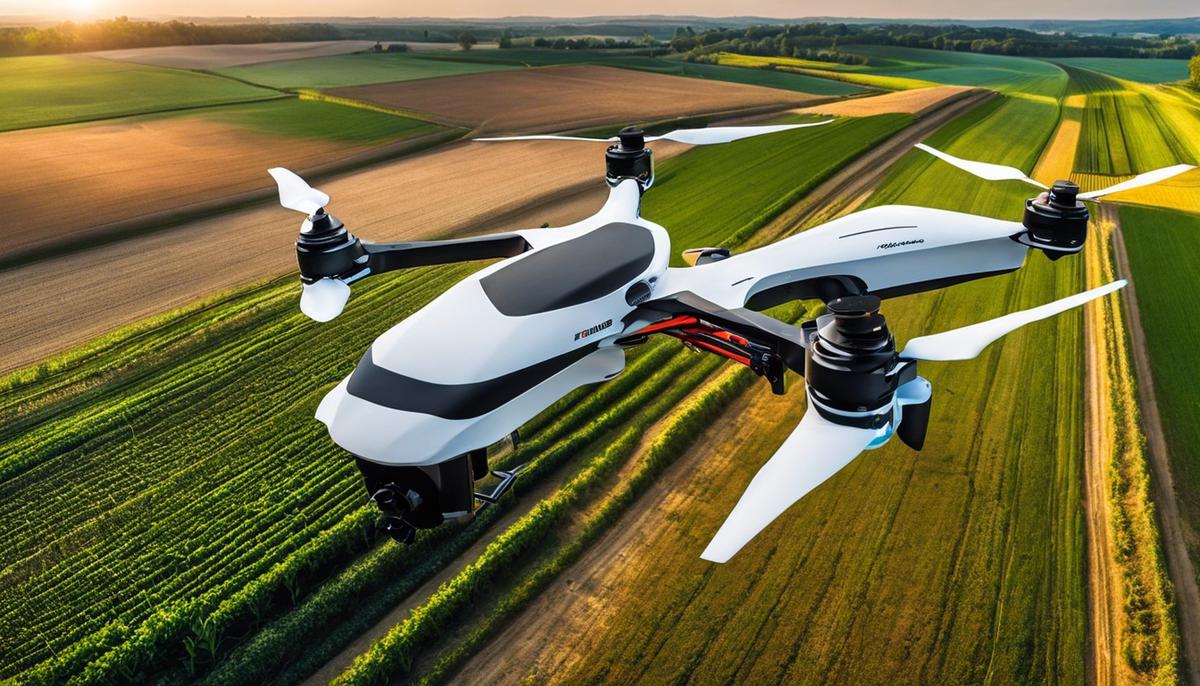
Legal and Ethical implications of drone usage in agriculture
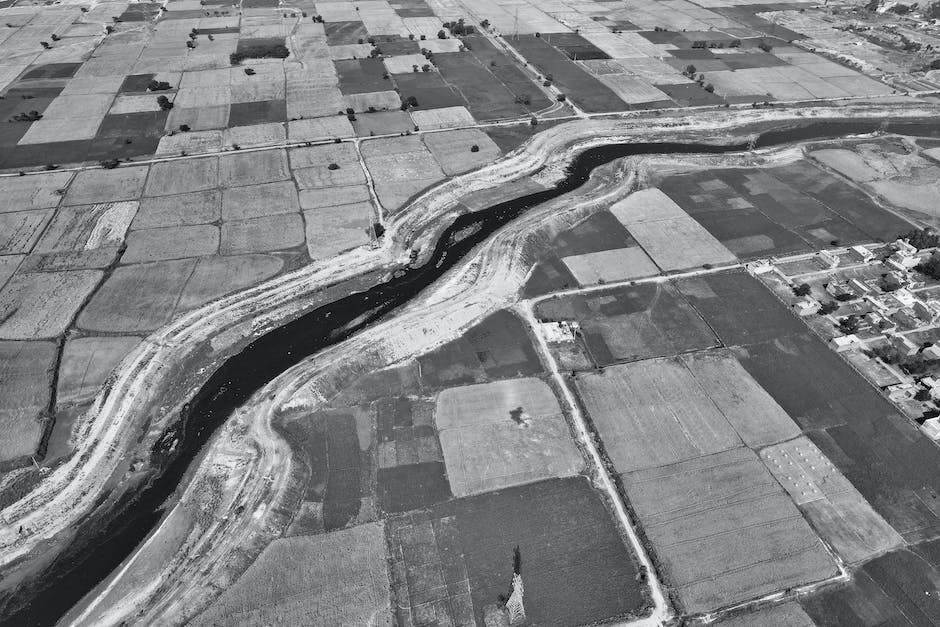
The future of agriculture drone sprayers
Anticipating Technological Progressions in the Field of Agriculture Drone Sprayers
